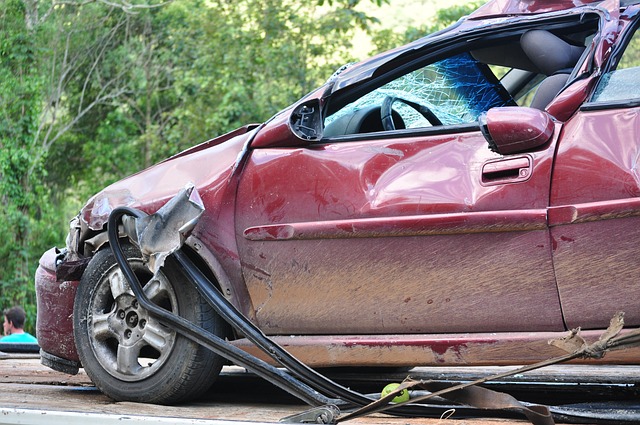The advent of autonomous vehicles is revolutionizing motor insurance by shifting from driver-centric liability to system-based accountability. Insurers must adapt by understanding complex automotive technologies, their limitations, and potential failures to accurately assess risks and determine fault. This requires innovative pricing and underwriting strategies, consumer education on roles and rights, and tailored insurance packages designed for specific autonomous vehicle capabilities. The industry faces challenges in managing risk, addressing systemic issues, and establishing liability in cases of autonomous system failures or interactions with human drivers. Staying informed is crucial for both consumers and professionals to effectively navigate this evolving landscape.
As autonomous vehicles (AVs) increasingly grace our roads, the motor insurance industry finds itself at a pivotal juncture. The traditional model of attributing liability to drivers is being challenged by the shift towards vehicle system accountability. This article delves into the dynamic changes within the insurance sector as it adapts to the new reality of AVs. We explore how liability dynamics are shifting, the pressure on conventional insurance models, and the emerging concept of holding vehicles accountable. Furthermore, we analyze consumer implications, industry responses, and the strategies needed to navigate this evolving motor insurance landscape.
- Autonomous Vehicles: Shifting Liability Dynamics
- Traditional Insurance Models Under Pressure
- Vehicle System Accountability: A New Paradigm
- Consumer Implications and Awareness
- Industry Adaptation and New Coverage Approaches
- Navigating the Evolving Motor Insurance Landscape
Autonomous Vehicles: Shifting Liability Dynamics

The rise of autonomous vehicles is fundamentally altering the dynamics of liability as it pertains to motor insurance. In traditional models, the driver bears primary responsibility for accidents, with their insurance policy covering any damages or injuries. However, with self-driving cars, the focus shifts from human error to the performance and reliability of the vehicle’s systems. This change necessitates a reevaluation of risk assessment strategies and coverage options.
As autonomous vehicles navigate roads using complex algorithms and sensors, the potential for liability shifts from driver to manufacturer or even technology developers. Insurers are now tasked with understanding the intricacies of these systems, including their limitations and failures, to accurately price policies and determine fault in the event of an accident. This new landscape demands a nuanced approach, where traditional risk factors may no longer apply, and innovative solutions become essential for protecting both consumers and industry stakeholders.
Traditional Insurance Models Under Pressure

The traditional insurance model for motor vehicles relies heavily on assigning liability to drivers, considering their behavior, driving history, and personal circumstances. However, as autonomous vehicles take to the roads, this model is under significant pressure. With self-driving cars, the focus shifts from individual responsibility to the reliability and functionality of the vehicle’s systems. This shift necessitates a reevaluation of risk assessment and coverage options.
Insurers are now grappling with how to price policies, set deductibles, and determine compensation for accidents involving autonomous vehicles. Factors such as vehicle technology, sensor performance, and software updates become critical variables in understanding and managing risk. The industry is facing the challenge of adapting its models to accommodate the new reality where human error is minimized, but other systemic issues may arise from technological failures or cyberattacks on these advanced vehicles.
Vehicle System Accountability: A New Paradigm

The concept of vehicle system accountability marks a significant shift in the motor insurance industry, moving away from traditional driver-centric liability models. As autonomous vehicles take to the roads, the focus shifts from human error and individual responsibility to the reliability and performance of the vehicle’s systems. This new paradigm demands a reevaluation of how insurers assess risk and determine coverage.
With self-driving cars, the insurance industry now considers factors such as vehicle sensor functionality, software integrity, and decision-making algorithms as critical elements in understanding and mitigating potential risks. As these vehicles navigate complex environments, their advanced systems must be held accountable for any malfunctions or errors that may lead to accidents. This shift requires insurers to develop innovative approaches to pricing and underwriting policies, factoring in the sophisticated technology that underpins autonomous vehicles.
Consumer Implications and Awareness

As autonomous vehicles hit the roads, consumers stand to gain significant benefits in terms of safety and convenience. However, there’s a growing need for awareness regarding the shift in motor insurance dynamics. The traditional model where driver responsibility was central is evolving into a system-centric approach, focusing on vehicle accountability. This transition demands that consumers understand their roles and rights in cases involving autonomous vehicles.
Insurers are still refining policies to address unique challenges posed by self-driving cars, such as deciding liability when an accident occurs. Consumers should be informed about potential changes in coverage options, deductibles, and claims processes. Staying educated will empower them to make informed decisions when purchasing insurance, ensuring adequate protection aligned with the new reality of autonomous vehicles.
Industry Adaptation and New Coverage Approaches

The motor insurance industry is undergoing a significant transformation as autonomous vehicles take to the roads in increasing numbers. Insurers are adapting their strategies and models to align with this new era of mobility, where responsibility shifts from human drivers to advanced vehicle systems. This adaptation involves reevaluating traditional liability frameworks and exploring innovative coverage approaches.
One key change is the transition from driver-centric policies to system-based assessments. Instead of solely focusing on individual drivers’ behavior and records, insurers are now examining the performance and reliability of autonomous driving systems. This shift necessitates the development of new risk evaluation methods and data collection practices, ensuring that coverage reflects the unique attributes of each vehicle’s self-driving capabilities. As a result, consumers can expect more tailored insurance packages, offering comprehensive protection for their specific autonomous vehicles.
Navigating the Evolving Motor Insurance Landscape

The motor insurance industry is undergoing a significant transformation as autonomous vehicles gain traction. The shift from driver-centric liability to vehicle system accountability presents both challenges and opportunities. Insurers are rethinking traditional models, considering factors like vehicle technology, sensor data, and system performance instead of solely relying on driver behavior and history. This evolution requires a nuanced approach, as determining liability in cases of autonomous system failures or interactions with human drivers becomes more complex.
Consumers should be aware that their insurance policies may need to adapt to cover new aspects of vehicle ownership and operation. As the technology advances, so do the expectations for coverage and protection. Staying informed about these developments allows both consumers and industry professionals to make informed decisions, ensuring they are prepared for the changing landscape of motor insurance for autonomous vehicles.



